David Suzuki's Blog, page 39
April 26, 2016
How to get to know nature
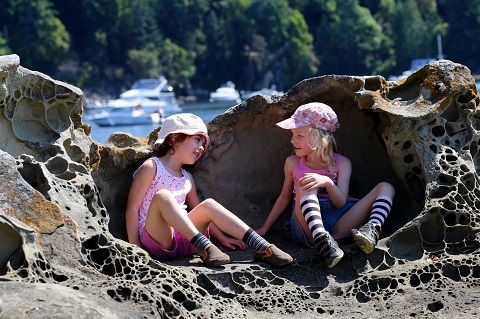
Be quiet and seek solitude. (Credit: Jennifer Rodriguez)
You love nature.
Together we even coined a term to describe what happens when we're not getting enough of it: "Treeprived".
For a fifth year, I ask you to immerse yourself in nature for 30 minutes a day for 30 days. We call it our 30×30 Nature Challenge. You might call it walking or biking to work, a lunch break outside, a walking meeting, a hike or time in the garden.
What else might you do for 30 minutes (minimum) a day? Well, there's a book for that: The Big Book of Nature Activities: A Year-Round Guide to Outdoor Learning, by Jacob Rodenburg and Drew Monkman. (Win a copy by commenting on this blog.) Here are 10 tips from the authors:
Ten ways to know nature
Roll over a log or rock and find a salamander (or centipede, millipede or beetle)!
Observe butterflies in the wild -- basking in the sun on gravel roads, atop a pile of dung, or near a puddle. To get a closer look, approach from behind, don't make sudden movements and avoid casting a shadow.
Catch and release a dragonfly in the morning. They perch near wetlands or meadows and need to warm up.
Sample wild edibles and learn how to forage. (Learn about wild edibles in Ontario and Alberta.) Maybe make spruce tip vinegar.
Be quiet and seek solitude. Leave your smartphone at home (unless you're a citizen scientist). Draw on all of your senses.
Star gaze. Light pollution is a side effect of the industrial revolution and our cities glow at night. Plan an escape to the darkness of the countryside, or plan a camping trip and stay up to look at the stars! Don't want to blow the kid's bedtime? Lay on your backs and watch the clouds.
Be patient. Natural wonders take time to reveal themselves. Or, you could be stepping on them.
Start a nature journal. Draw or write your experience. Suitable for all ages!
Go outside rain or shine. "There's no such thing as bad weather, only unsuitable clothing." ~ Alfred Wainwright
Join a family nature club in your area. Most cities have them, or launch your own!
Where will you go to watch the night sky? Which nature club will you join? What did you spy on your last outing?
Join our 30×30 Nature Challenge and then comment on this blog to win a copy of The Big Book of Nature Activities: A Year-Round Guide to Outdoor Learning, by Jacob Rodenburg and Drew Monkman. Donated by New Society Publishers @NewSocietyPub. (Draw date: May 27, 2016.)
Sincerely,
Lindsay Coulter, a fellow Queen of Green
Hey! Want more DSF? Join David Suzuki on Facebook

We stand with Grassy Narrows
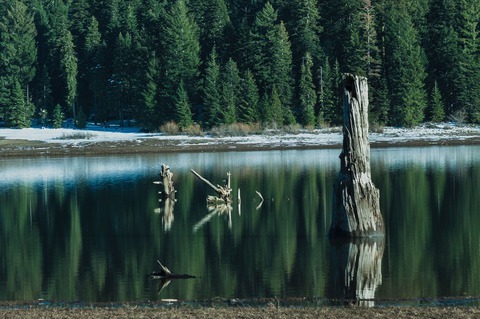
For over half a century mercury has poisoned the river that is the life blood of the Grassy Narrows First Nation and their neighbours.
In one of Canada's most shameful and tragic acts of willful neglect nothing has ever been done to clean up the river while generations of Grassy Narrows families continue to bear the debilitating burden of mercury poisoning.
Finally we have governments in both Toronto and Ottawa that speak to rebuilding our fractured relationship with this land's First Nations and with the environment that we all depend on for clean water and air.
Nowhere is the need for that new relationship more stark than in Grassy Narrows. A new relationship must start by righting the wrongs of the past.
Scientists tell us that the river system can be cleaned up with our help. We bear a heavy moral responsibility to follow their advice and to finally right this wrong.
We, the undersigned, call upon government to commit to remediate the English-Wabigoon River System and return it to a healthy watershed that can safely sustain Grassy Narrows' families, culture, and economy.
We call for the formation of a panel of experts appointed by Grassy Narrows with sufficient empowerment and endowment to implement a scientifically sound remediation program without delay under the direction of Grassy Narrows.
We will stand with Grassy Narrows until their river flows with life again.
Hey! Want more DSF? Join David Suzuki on Facebook

April 21, 2016
Shocking migratory changes bring electric rays to Canada's Pacific
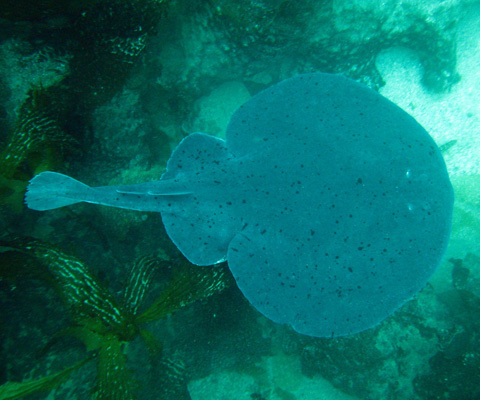
Pacific electric ray (Credit: California Department of Fish and Wildlife via Flickr)
Gary Krause was mystified by an unusual fish he caught in his trawl net off B.C.’s Pacific north coast in October. It was a Pacific electric ray, named for a pair of organs behind its head that can knock a human adult down with a powerful shock.
Trawl fishery records show 88 of these rays in B.C. waters since 1996. Although an electric ray was first recorded off Vancouver Island’s west coast in 1928, nearly a quarter of the more recent sightings came from 2015 alone.
Fishermen like Krause, who worked an astounding 4,000 days at sea over the past 35 years, are often the first to observe the beginnings of fundamental ecosystem shifts. In 2008, he also identified the first ever brown booby, a tropical seabird, in Canada’s Pacific waters.
Why are creatures like electric rays, which prefer warmer southern California or Baja waters, turning up with greater frequency further north?
Unlike land temperatures, which constantly fluctuate, ocean temperatures are usually stable, with virtually no daily changes, little seasonal differentiation and only minor shifts over decades. Most marine animals prefer a narrow temperature range and move only in response to changes.
Short-term oceanographic events, such as El Niño and the Pacific “blob” — an enormous area of unusually warm water in the North Pacific — demonstrate that while oceans may be relatively stable, they aren’t immune to temperature shifts. These phenomena explain the appearance of unexpected species off B.C.’s coast over the past winter, including a Guadalupe fur seal, green sea turtle and Risso’s dolphins. Higher water temperatures are also changing the relative concentrations of microscopic, occasionally toxic algae.
While these marine oddities don’t necessarily indicate a full-scale ecosystem shift, they may be signs of what to expect as the planet warms. Shorter-term phenomena correspond with longer-term oceanographic changes around the world. These changes promise to fundamentally alter the cast of characters in marine ecosystems before we’ve had the opportunity to adequately study them.
Climate change is pushing more species of fish closer — and faster — to the cooler North and South poles than similar climate-provoked wildlife movements on land. Fish are moving an average of 277 kilometres every decade and phytoplankton are speeding along at 470 kilometres. Land-based wildlife are inching along at an average of six kilometers a decade. These shifts are bringing together species that have never had contact before, introducing new predators that could result in regional extinctions. In addition to moving, phytoplankton, which produce half the world's oxygen and support most ocean life, have been declining dramatically over the past century, an average of one per cent a year.
Sea levels are also rising quickly because of climate change. Over the past two decades, global levels have risen more than twice as fast as in the 20th century. As water warms up, it expands. Thermal expansion in warmer ocean waters has been the greatest contributor to global sea level rise over the past century — although rapid melting of glaciers, polar ice caps, and Antarctic and Greenland ice sheets is also a factor.
Higher ocean temperatures also stress coral reefs, which then release algae, causing the corals to bleach and often die. Australia’s Great Barrier Reef just experienced its worst bleaching ever, with the Great Barrier Reef Marine Park Authority reporting that half the coral in the northern parts of the reef were dead, according to a Guardian article.
Along with environmental impacts, warming oceans will create economic insecurities for industries such as fisheries. One study predicted a nearly 50 per cent decline in B.C. First Nations’ catches for culturally and commercially important fish by 2050.
We can help marine life by reducing greenhouse gas emissions to keep global average temperature increases below the 1.5 C goal set out in the December Paris Agreement. Well-monitored fisheries, like those in British Columbia, will become essential data-collection points for understanding shifting marine environments. Although it’s difficult to reverse temperature and other oceanographic changes that climate change has already set in motion, we may be able to lessen the impact through habitat protection, strong fisheries management and robust scientific monitoring.
The Pacific electric ray is just one of many marine canaries warning us of changing ecosystems. We’d be wise to listen to these signals.
Hey! Want more DSF? Join David Suzuki on Facebook

REaDY Summit 2016 focuses on hope and action
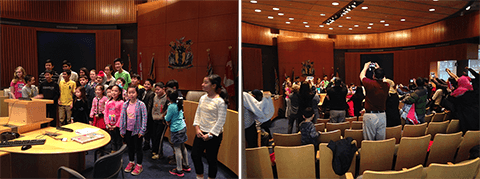
Richmond Earth Day speech contestants at city council chamber
Protecting the environment is a family affair, and there is nothing more telling than the excitement and pride students and their parents shared at the annual REaDY Summit speech contest. Typically, the speech contest takes place a month before the April 23 half-day event. This year's theme is "Change happens now; our future is rooted in our backyard."
"We need to save our planet, so when future generations grow up and become parents, their children will not have to face the problems we fear today," Abbas Bimji, a Grade 7 student from Water Lee Elementary, told the audience at the speech contest in a packed council chamber in early March. "We won't let our nightmares get to us. United, we can save our earth."
For Ryan Liu, a Grade 9 student from McMath Secondary, waiting and procrastinating is no longer acceptable. "I want to make a change. I will make that change. There's a really big difference, you know? Wanting is just an empty way to trick yourselves into thinking you're doing a good thing... By not taking action, we are causing destruction. By standing by, we are letting the world pass us by... I know there are plenty of people just like you, like me, people who want to make the world a better place. Who want to see our Mother Nature smile again, laugh and dance again, to prosper and live on with a bright healthy future."
On Saturday, April 23, Abbas and Ryan will join peers from Metro Vancouver to inspire and encourage REaDY Summit participants to take action for environmental protection. Youth leaders joining the call for action include this year's keynote speakers, Jay Matsushiba and Kate Hodgson.
[image error]
Photos source: REaDY Summit
Jay is a Grade 12 student from Sir Winston Churchill Secondary in Vancouver and co-chairs the Vancouver Youth Sustainability Network. For a long time, Jay found himself lost in the virtual world of make-believe. The self-professed video-gamer and Internet addict pulled himself from isolation by connecting with nature.
"My friend had organized a backpacking trip to hike in the Juan de Fuca Trail on Vancouver Island... Together, this group of five teenagers were going to take on this adventure..."
For Jay, connecting with nature did more than getting him closer with his friends, it also helped him find hope. "We're not helpless, we not useless and we're not hopeless. We have the capability to make our environment and this world a better place... And if we cannot do it alone, together we will."
At 19, Kate Hodgson's path to environmental advocacy and action began long before most of her peers. Last year, the Globe and Mail picked Kate as one of 10 B.C. young people age 20 and under who are outstanding in various fields, ranging from arts to science to activism. The veteran environmental advocate and first-year UBC student has long been aware that human activity is a cause of climate change. She has tried to be part of the solution to the changing climate, biking everywhere, and living with her parents where renewable energy is the main source of household energy. But she didn't feel fully empowered until she became connected with like-minded people who began turning their fear and frustration into action. Today, Kate finds inspiration in collaborating with young people who care about the environment and draw strength from each other through climate actions like Divest UBC and student mobilization around the COP21 climate conference in Paris last year.
You can share the passion and conviction of young people like Kate and Jay on Saturday at REaDY Summit 2016. To register, visit www.readysummit.ca/
This is the fifth year the David Suzuki Foundation has partnered with the City of Richmond and school district to co-host the REaDY Summit. Apart from inspiring speeches, the half-day event also brings in green leaders from Metro Vancouver to host workshops and share green knowledge through exhibits and displays.
As a partner, we were proud to see the REaDY Summit win the 2015 Our Canada Project Award, and we are also inspired by the hard work city staff does to lower Richmond's greenhouse gas emissions. According to a recent report to council, Richmond's emissions dropped by six per cent from 2007 to 2010. Despite a 14 per cent jump in population from 2007 to 2014, the city managed to hold its emissions increases to one per cent. There is a lot of work to be done, and the REaDY Summit is a good place to start.
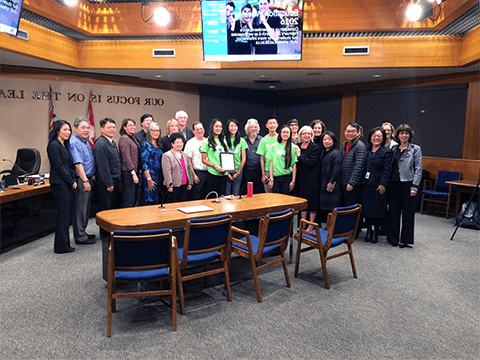
Hey! Want more DSF? Join David Suzuki on Facebook

Join the 30x30 Challenge!

It's time to fall (back) in love with nature! Can you spend at least 30 minutes in nature for 30 days in May?
Hey! Want more DSF? Join David Suzuki on Facebook

April 20, 2016
On Earth Day, celebrate changes that make oceans healthier
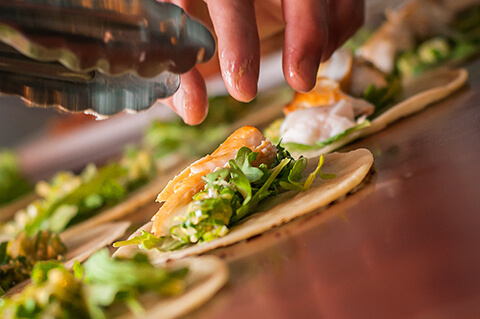
Chef Ian Lai prepares an easy and delicious sablefish recipe (Credit: Barry J Brady Photography)
On April 22, we celebrate Earth Day. Choosing sustainable seafood is a great way to leave a smaller footprint on the planet. Here are some ways that supporting sustainable seafood improves ocean health and fishing and aquaculture practices.
Better fishing practices: The Pacific Groundfish Trawl Habitat Agreement has been recognized for its groundbreaking approach to reforming fishing practices to reduce bottom-trawling impacts on sensitive seafloor habitats. The trawl agreement, which the Foundation helped facilitate, is the first in the world to set up a quota system to limit habitat damage, especially to highly impacted deep water corals and sponges. There were just four fishing boundary infractions in the agreement's first year and the fleet's coral and sponge bycatch was only 10 per cent of the allowable limit. One of Canada's most criticized fisheries is now being recognized for its self-imposed regulations to reduce harmful impacts.
New approaches to reducing bycatch: Sometimes a simple idea goes a long way toward conservation. That's what the West Coast shrimp trawl fleet discovered when it began experimenting with LED lights on the front of trawl nets to reduce bycatch of endangered fish such as eulachon. After successful use of lights on American fishing boat nets, the Foundation worked with the trawl fleet to introduce the idea in Canada. The fear of exceeding eulachon bycatch limits restricted the trawl fleet from coming close to meeting its allowable shrimp catch. By reducing this concern, the fleet may be able to safely increase the amount of northern and pink shrimp caught and give consumers a sustainable option compared to the ubiquitous "red-listed" farmed Asian shrimp found at many Canadian grocers.
Raising fish on land: The environmental and health impacts of salmon raised in open net-pen containers pose serious concerns. SeaChoice recommends that people avoid these fish farm-raised Atlantic salmon. Land-raised alternatives can be a better choice. Raising salmon on land eliminates the need for antibiotics, protects the marine environment and wild salmon from contamination and requires 30 per cent less feed than open water salmon farming. Kuterra land-raised salmon grow in a closed containment recirculating facility in 'Namgis First Nation traditional territory near Port McNeill, British Columbia. Kuterra Atlantic salmon is available at Safeway seafood counters in Western Canada.
Fishing and aquaculture improvements that protect habitat, reduce bycatch and remove the worst impacts of open net-pen fish farming go a long way toward healthier oceans. Many Canadian grocery stores and restaurants are bringing in sustainable seafood products with SeaChoice or OceanWise labels. By choosing these products you're supporting positive changes on the water.
SeaChoice "best choice" options are now in more than 700 grocery stores across Canada. Ask your local grocer to bring in sustainable seafood options if they're not available. We can all play a role in supporting healthier oceans.
-The David Suzuki Foundation sustainable seafood team
Hey! Want more DSF? Join David Suzuki on Facebook

April 19, 2016
You can't build a new relationship with First Nations and allow Site C dam to proceed
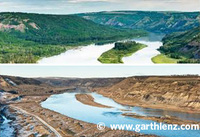
Site C dam construction is being challenged in court by Treaty 8 Nations -- yet BC Hydro is busy clear-cutting old-growth trees along the Peace River after the B.C. government green-lighted the project. Tell the government to stop Site C development.
Hey! Want more DSF? Join David Suzuki on Facebook

April 14, 2016
Nature calms the brain and heals the body
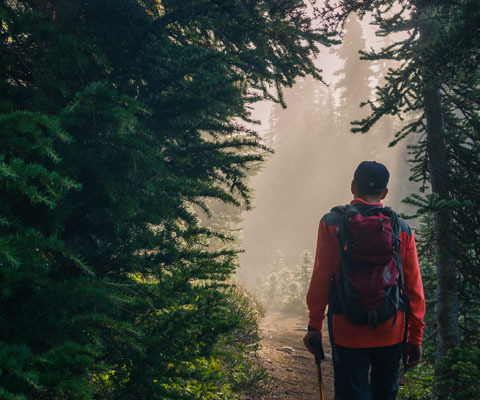
(Credit: Anton Bielousov via Flickr)
For the most part, our brains didn’t evolve in cities. But in a few decades, almost 70 per cent of the world’s people will live in urban environments. Despite the prosperity we associate with cities, urbanization presents a major health challenge. Cities, with their accelerated pace of life, can be stressful. The results are seen in the brains and behaviour of those raised in cities or currently living in one.
On the upside, city dwellers are on average wealthier and receive better health care, nutrition and sanitation than rural residents. On the downside, they experience an increased risk of chronic disease, a more demanding and stressful social environment and greater levels of inequity. In fact, city dwellers have a 21 per cent greater risk for anxiety disorders and a 39 per cent increased likelihood of mood disorders.
A study published in Nature links city living with sensitivity to social stress. MRI scans show greater exposure to urban environments can increase activity in the amygdala, a brain structure involved in emotions such as fear and the release of stress-related hormones. According to the study, the amygdala “has been strongly implicated in anxiety disorders, depression, and other behaviours that are increased in cities, such as violence.”
The researchers also found people who lived in cities for their first 15 years experienced increased activity in an area of the brain that helps regulate the amygdala. So if you grew up in the city, you’re more likely than those who moved there later in life to have permanently raised sensitivity to stress.
Author and professor David Gessner says we’re turning into “fast twitch” animals. It’s like we have an alarm clock going off in our brains every 30 seconds, sapping our ability to concentrate for longer periods of time. The demands of urban life include a constant need to filter information, dodge distractions and make decisions. We give our brains little time to recover.
How do we slow things down? Nature seems to be the answer. Cognitive psychologist David Strayer’s hypothesis is that “being in nature allows the prefrontal cortex, the brain’s command centre, to dial down and rest, like an overused muscle.”
Research shows even brief interactions with nature can soothe our brains. Stanford’s Gregory Bratman designed an experiment in which participants took a 50-minute walk in either a natural or an urban environment. People who took the nature walk experienced decreased anxiety, brooding and negative emotion and increased memory performance. Bratman’s team found walking in natural environments can decrease rumination, the unhealthy but familiar habit of thinking over and over about causes and consequences of negative experiences. Their study also showed neural activity in an area of the brain linked to risk for mental illness was reduced in participants who walked through nature compared with those who walked through an urban environment.
Korean researchers investigated the differences in brain activity when volunteers just looked at urban versus natural scenery. For those viewing urban images, MRI scans showed increased blood flow to the amygdala region. In contrast, areas of the brain associated with empathy and altruism lit up for those who viewed natural scenes.
In Japan, scientists found people spending time in nature — shinrin-yoku or “forest bathing” — inhale “beneficial bacteria, plant-derived essential oils and negatively-charged ions” which interact with gut bacteria to strengthen the body’s immune system and improve both mental and physical health.
Spending time in nature regularly is not a panacea for mental health but it’s an essential component of health and psychological resilience. Nature helps us withstand and recover from life’s challenges. Even city dwellers can find nearby nature — a garden, local park or trail — to give their overworked brains a break.
Every spring, the David Suzuki Foundation challenges Canadians to spend more time outside for health and mental well-being. The 30×30 Nature Challenge asks people to commit to spending at least 30 minutes a day in nature for 30 days in May. When you take the 30×30 pledge at 30×30.davidsuzuki.org, you’ll receive the latest research on the health benefits of spending time outdoors along with practical tips on how to add green time to your daily routine.
Let’s show our brains — and bodies — some love. Get outside!
JOIN THE 30×30 NATURE CHALLENGE!
Hey! Want more DSF? Join David Suzuki on Facebook

April 13, 2016
Volunteers make our work possible
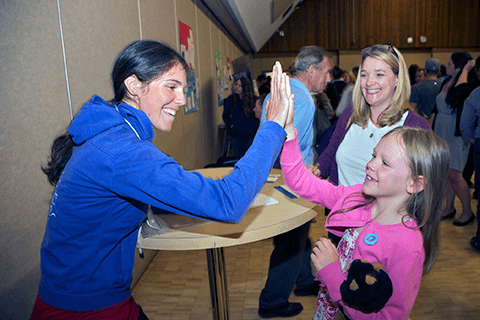
(Credit: Janice Williams via Flickr)
Volunteers are the roots of strong communities -- that's the theme of this year's National Volunteer Week. At the David Suzuki Foundation, we couldn't agree more.
Our volunteers are not only the roots of their communities, they are also the Foundation's branches, bringing our message to people across the country.
The work of our dedicated volunteers includes:
Helping 130 municipalities pass declarations recognizing their citizens' right to a healthy environment.
Inspiring more than 700 families to lower their environmental footprints.
Attending hundreds of public events to increase support for our work.
Connecting with a dozen coastal communities whose voices are now helping to show the world that environmental rights are human rights.
Contributing countless hours of in-office support.
Conducting research showing the true value of Canada's natural capital.
Creating pollinator-friendly green corridors in Canada's largest city.
Providing an elder perspective on social and environmental issues while bridging the gap between generations.
The examples are endless and the positive effects DSF volunteers have on our society is immeasurable. Here's some of what inspires them, in their own words:
"I get to help the organizations that I think are doing great things achieve their goals and it makes me feel like I did something good for the community/world. It gives me purpose and meaning." - Julia Taylor, Queen of Green Coach
"I volunteer at the David Suzuki Foundation because... many think that the gas and oil economy is more important than clean water, fresh air and clean arable soil for raising our food." - Monica Wilson, Suzuki Elder and Community Giving Clerk
"It's one small way I can further the vital and important work of the Foundation." - Peter Ladner, Board Member
"I volunteer for DSF because I would like to return the favour to Mother Nature and I know I can do it with DSF." - Eri Hato, Finance Assistant
"I volunteer for DSF because of 'the breeze, the trees, the honeybees -- all volunteers!' - Juliet Carinreap" - Lynn Daoust, Special Event Host
"I volunteer for DSF because I enjoy being able to educate the public about how we can help make choices that are more environmentally friendly. DSF is a trusted voice in the community and I'm honoured to be a part of the volunteer program." - Jaskaran Dosange, Multicultural Outreach and Special Event Host
"I would like to thank the David Suzuki Foundation for this unique opportunity. Researching the environmental and social history of Howe Sound taught me so much. I developed a deep appreciation for the natural and cultural heritage of Howe Sound and British Columbia." - Estelle Arbellay, Howe Sound Archives Collection Assistant
"DSF's vision and mission are critical to life on our planet and because I thought I had something to offer." - Stephanie Green, Board Member
"I volunteer for the Foundation because I believe that a green and sustainable future is possible, and the Foundation offers inspiration and hope for that future. Also, the Foundation offers so many great opportunities to get in touch with nature and the city. I'm so glad to be part of such a wonderful movement!" - Emma Griffiths, Special Event Host
"I felt that volunteering with DSF, I enjoy having the chance to learn the latest about this complex environmental movement, about the many-faceted issues of climate change, the fear of it and the hope we have...and whatever I do, however little, I felt at least I'm doing something, instead of staying out on the sideline of this most important challenge we're facing now..." - Cynthia Lam, Suzuki Elder
"I volunteer for DSF because I wish more people understood the importance of protecting our environment. Every person counts." - Emily Chen, Human Resources Assistant
"The values and projects of the organization align tightly with my professional and personal commitments to social justice." - Margot Young, Board Member
Happy National Volunteer Week to the thousands of volunteers supporting the David Suzuki Foundation! We couldn't do what we do without YOU!
Hey! Want more DSF? Join David Suzuki on Facebook

How to land a great volunteer gig
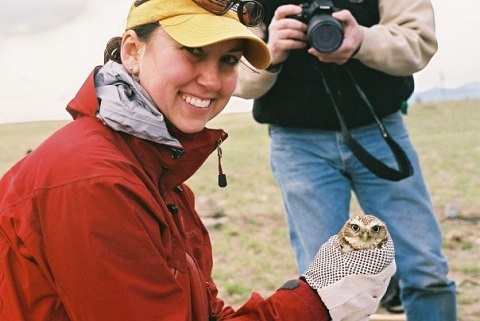
Annually I volunteered to spend a weekend releasing endangered burrowing owls into the grasslands of B.C.!
Happy National Volunteer Week!
I love mentoring volunteers -- like my 130+ friends, a.k.a. Queen of Green Coaches.
I've had gratifying, heart-warming volunteer gigs:
At the Strathcona Raptor Shelter, I did ultrasounds on an injured Swainson's hawk, washed tar off a snowy owl, released a great horned owl, took orphaned red foxes for walks, collected aspen trees for beaver food, rappelled down the banks of the Red Deer River to tag prairie falcon chicks -- and much more!
For Little Bits Therapeutic Riding Club, I helped children and adults with disabilities groom and ride horses.
And the David Suzuki Foundation couldn't do what we do without our amazing volunteers. Last year, more than 15,000 dedicated people, including Blue Dot community leaders, devoted some 27,000 hours to our work!
Canadians contribute two billion hours of volunteer time each year -- people of all ages giving back to help build healthier, more resilient communities.
How to find the best volunteer gig
Find your interest. You'll need to love it to give it your best. If you're a "people pleaser," beware of being guided by guilt.
Match your needs. Want more exercise? Volunteer for something active -- dog walking for an animal shelter, trail maintenance, pulling ivy, etc.
Strengthen your resume. Learn new skills, expand your horizons and build important contacts.
Go as a group. Volunteer with family or friends.
Make it a work thing. Employee volunteer programs have a positive impact on morale, skill development, productivity, job satisfaction and employee retention. Volunteer Canada @VolunteerCanada joined with 21 national corporations to form the Canadian Corporate Council on Volunteering. For example, Home Depot contributes more than 60,000 volunteer hours nationally.
Do your research. There's something for everyone at Volunteer Canada.
Take a volunteer vacation. Experience a new city, region or country from the eyes of selfless service.
Try once before you commit long-term. Volunteer at an event, learn about the organization first-hand and chat with other volunteers before you decide.
Where do you volunteer and why? Does your workplace offer an Employee Volunteer Program?
Comment on this blog to win a Queen of Green prize package (draw date: May 9, 2016).
Sincerely,
Lindsay Coulter, a fellow Queen of Green
Hey! Want more DSF? Join David Suzuki on Facebook

David Suzuki's Blog
- David Suzuki's profile
- 247 followers



